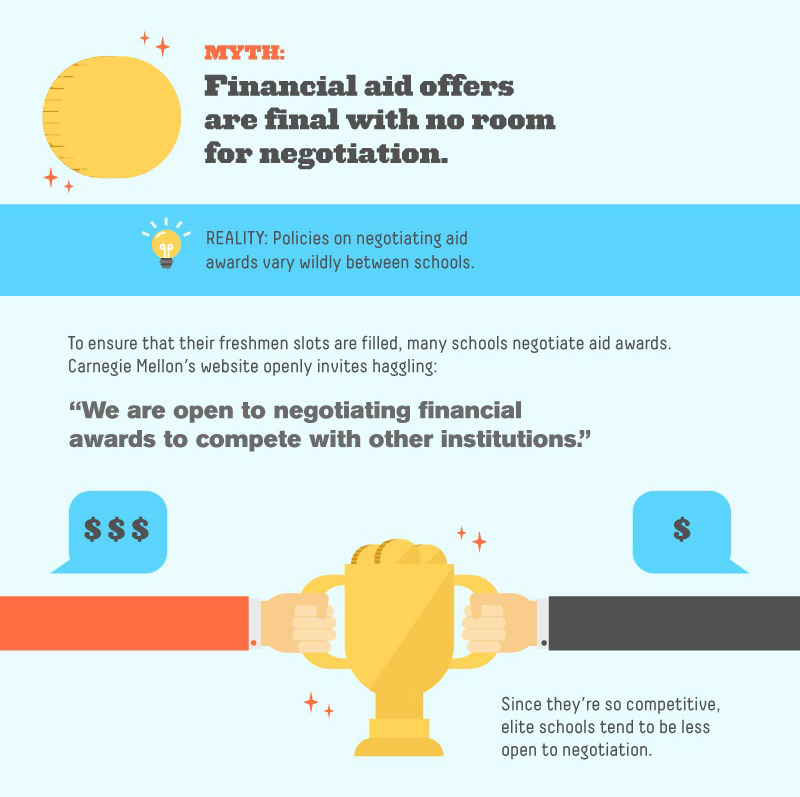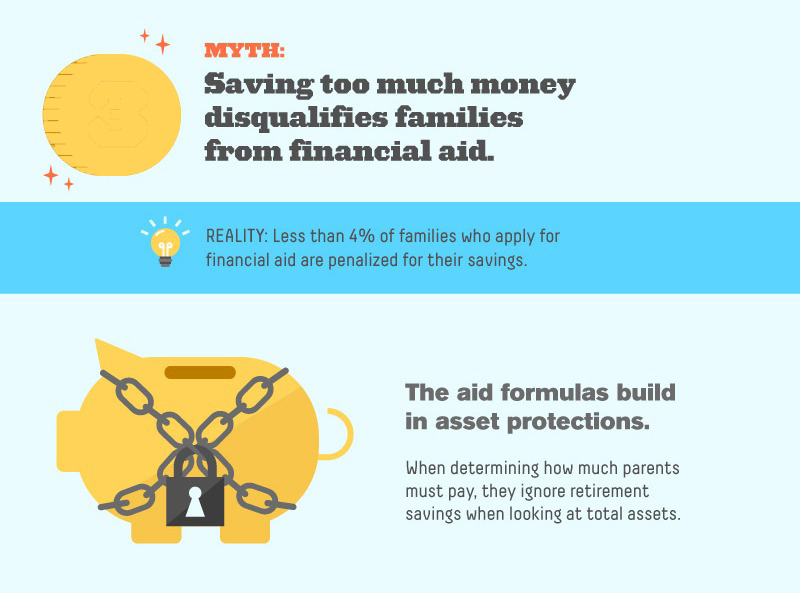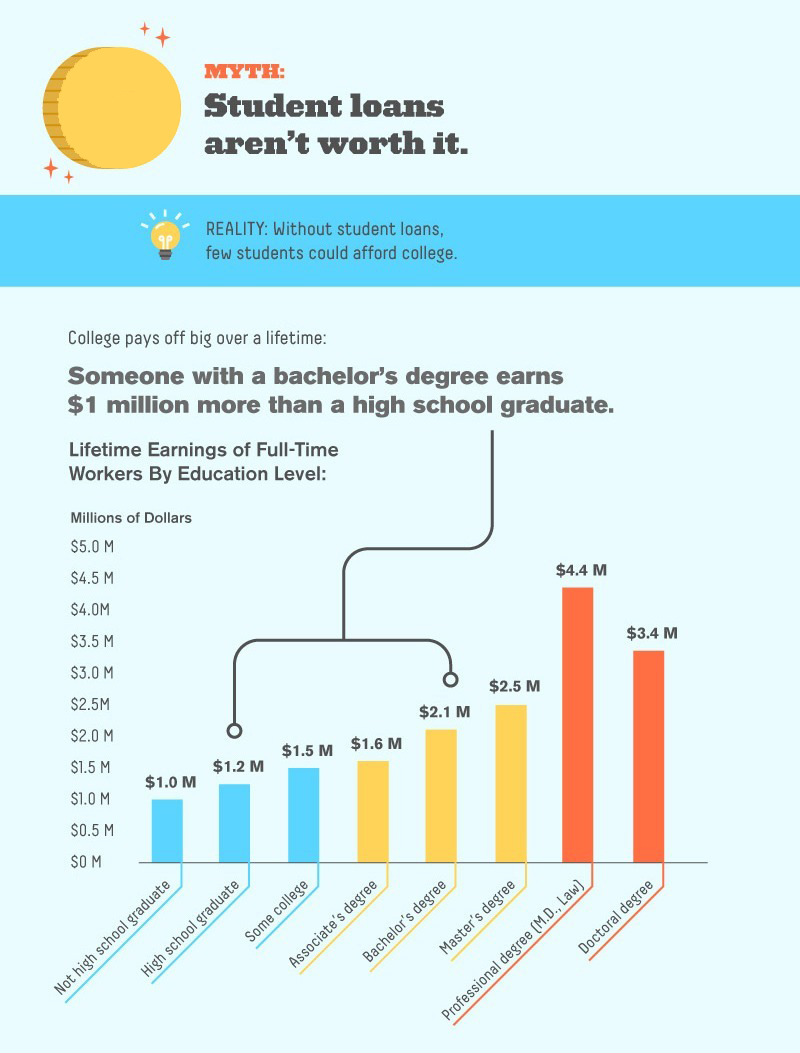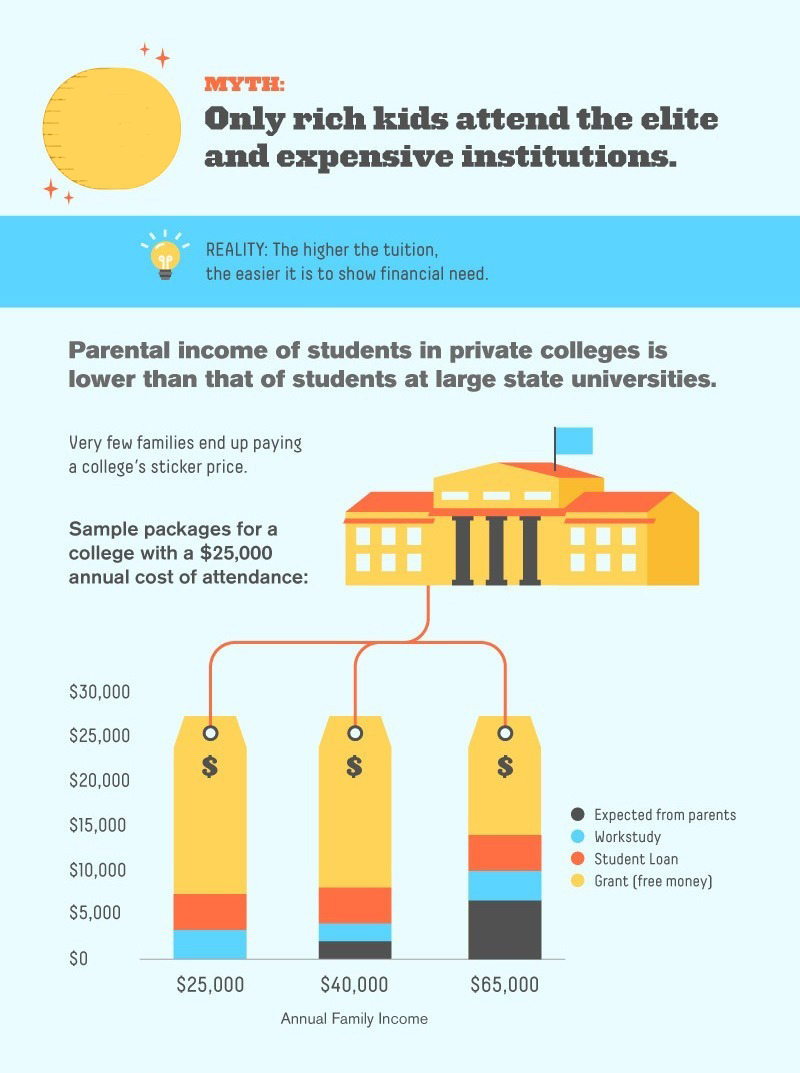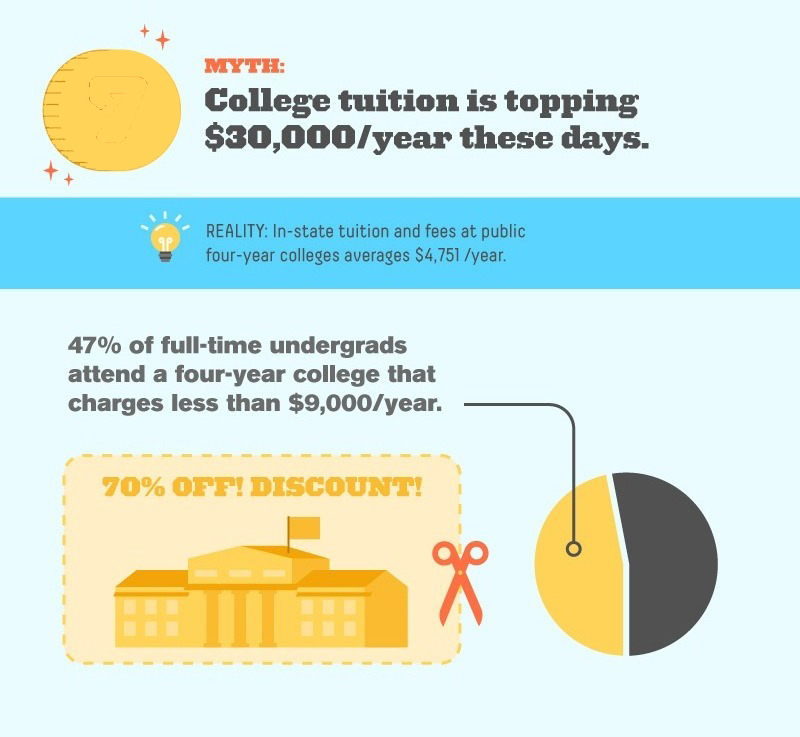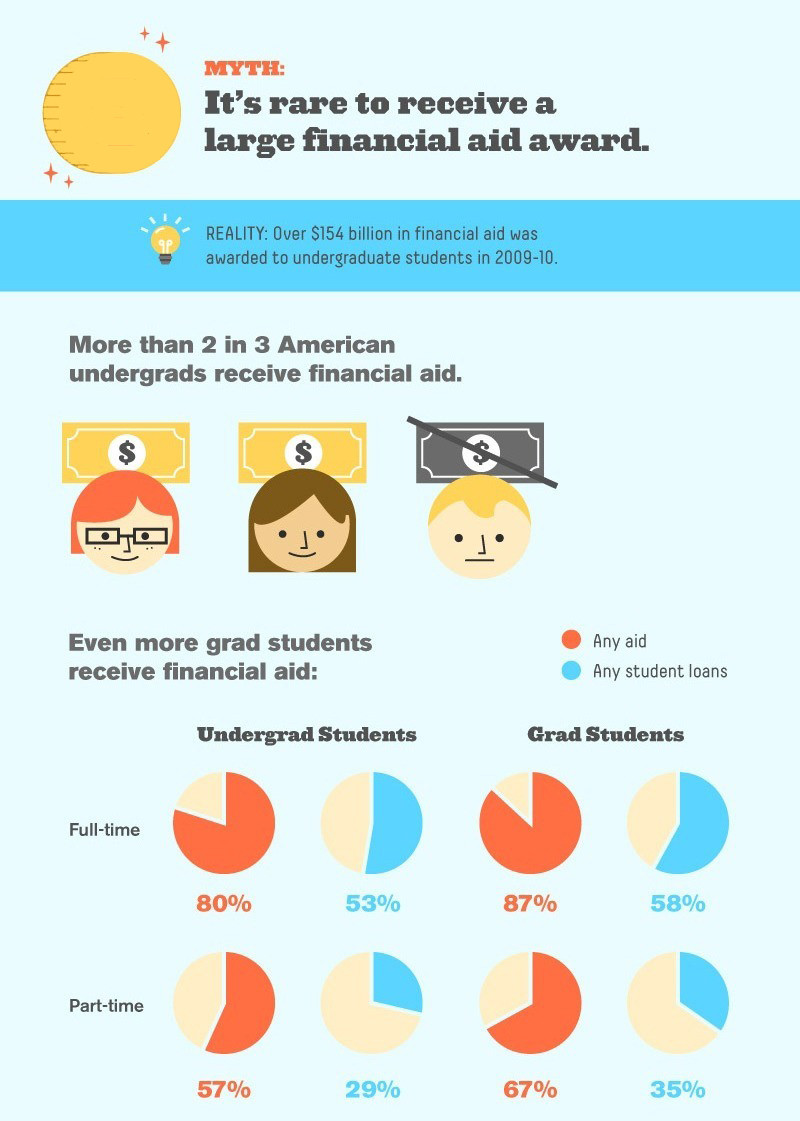Not Enough Financial Aid is Available.
Not true. Financial aid comes in many forms. During the 2010-2011 academic year, student financial aid rose to record levels exceeding $154 billion. While less may be available in the form of grants, the fact is that the vast majority of students (over 85%) receive some form of aid – whether in the form of subsidized loans or institutional loans and grants.
Only students with good grades get financial aid.
Not true. While there are pots of money for merit-based grants and aid, students don’t need top grades to receive subsidized loans. And many schools offer aid programs to students based on their course of study. In other cases, schools may offer aid as part of a complete package as an incentive to attract a student to enroll and help diversify their student body.
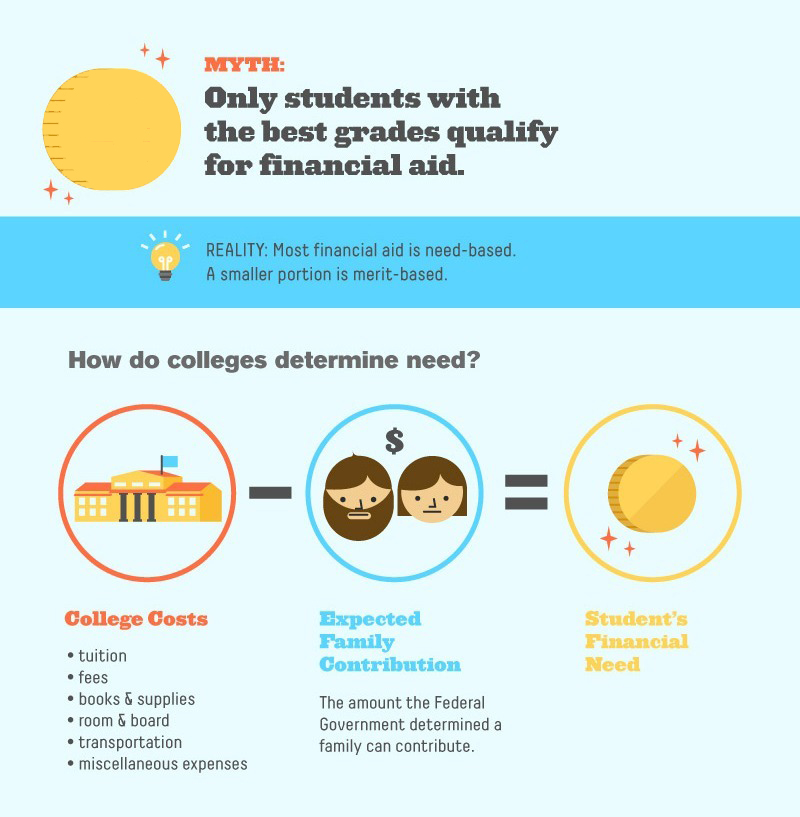

You have to be a minority to get financial aid.
Not true. Except for specific scholarship opportunities which may be geared to students of a specific background, nationality, or religion, the vast majority of merit-based aid and all need-based loans are color-blind.
I won’t need government help. I’ll get scholarship money.
You might. And you might win the lottery or some other windfall like an inheritance. But that doesn’t mean you shouldn’t have a plan in place to properly fund an education and minimize the anxiety and stress. Private scholarships provide a small portion of funding. More than 70% of aid comes from government sources and almost 29% from school endowment funds.
I make too much money to qualify for any aid.
Not likely. Even parents with adjusted gross earnings above $150,000 per year typically qualify for some sort of student financial aid. The aid formulas are based on a number of factors and not just on income. Depending on the age of the parents, tax filing status, and number of children in school among other factors, you may qualify for a lower Expected Family Contribution (EFC) and more financial aid. There are income and asset exemptions which help shield a good portion of both and help a family qualify for more aid. To minimize your EFC and maximize your aid eligibility, you’ll need to put in place a number of different tax, asset and loan strategies ahead of time.
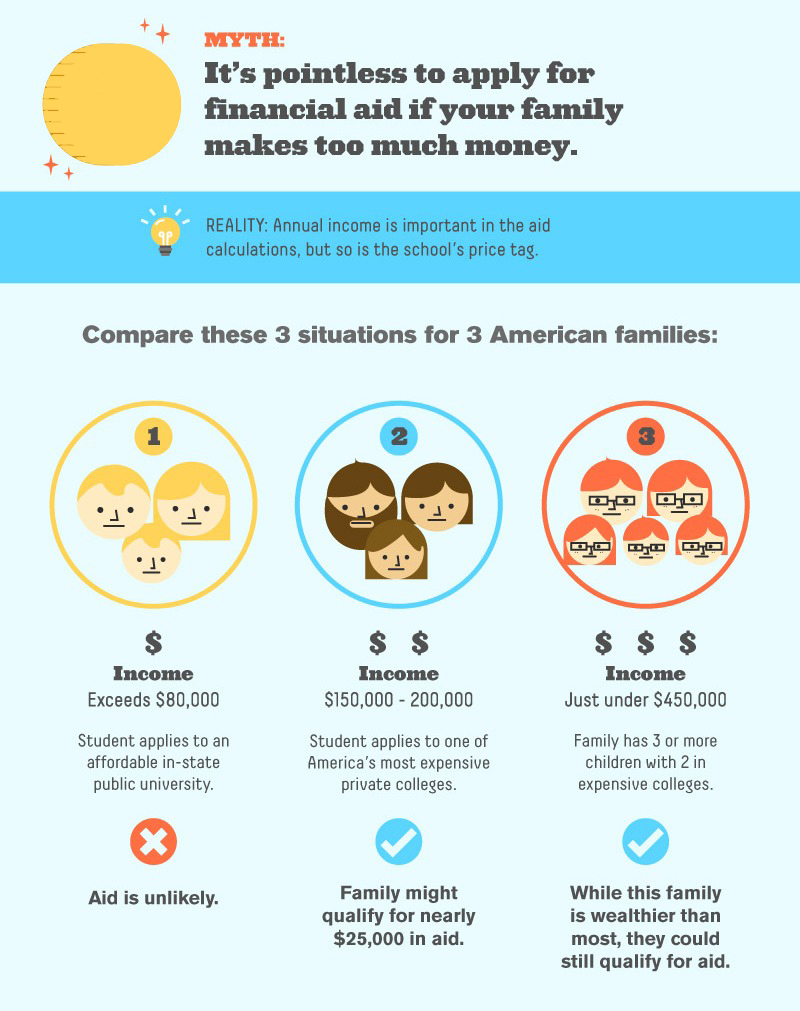

Financial aid offers are final with no room for negotiation.
Saving too much money disqualifies families for financial aid.
Student loans aren't worth it.
Only rich kids attend the elite and expensive institutions.
College tuition is topping $30,000/year these days.
It's rare to receive a large financial aid award.
Adapted from USnews.com
